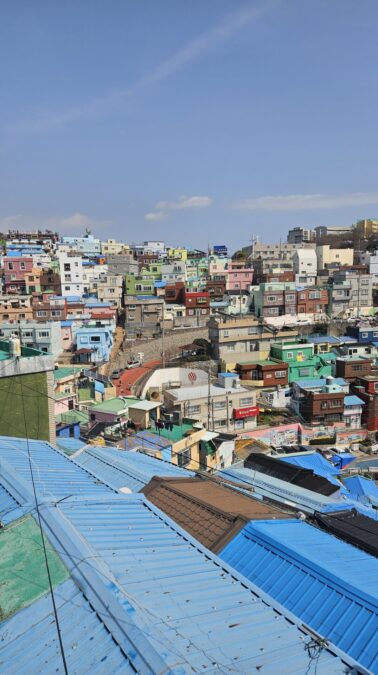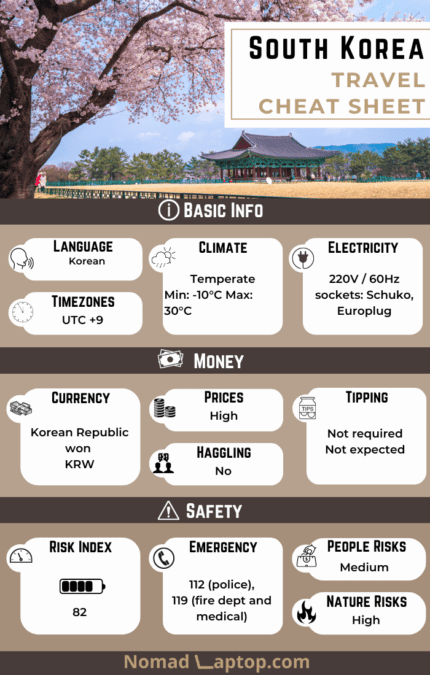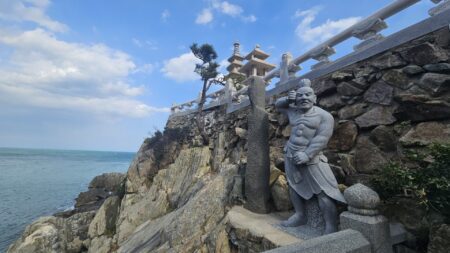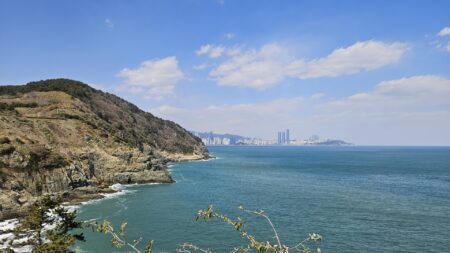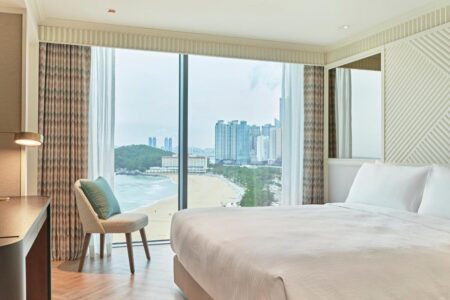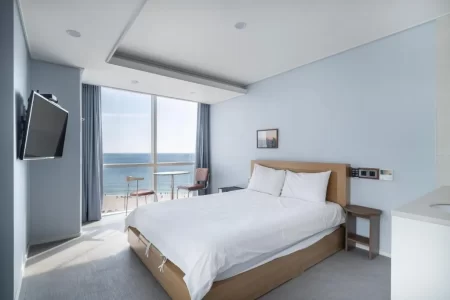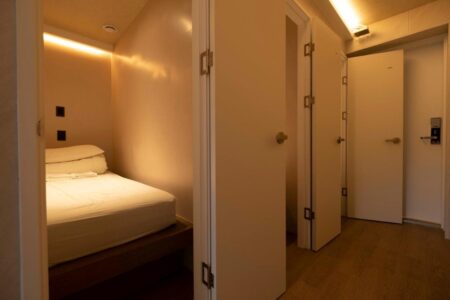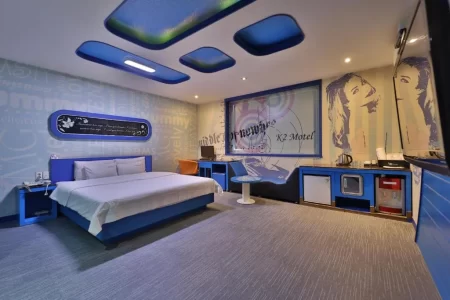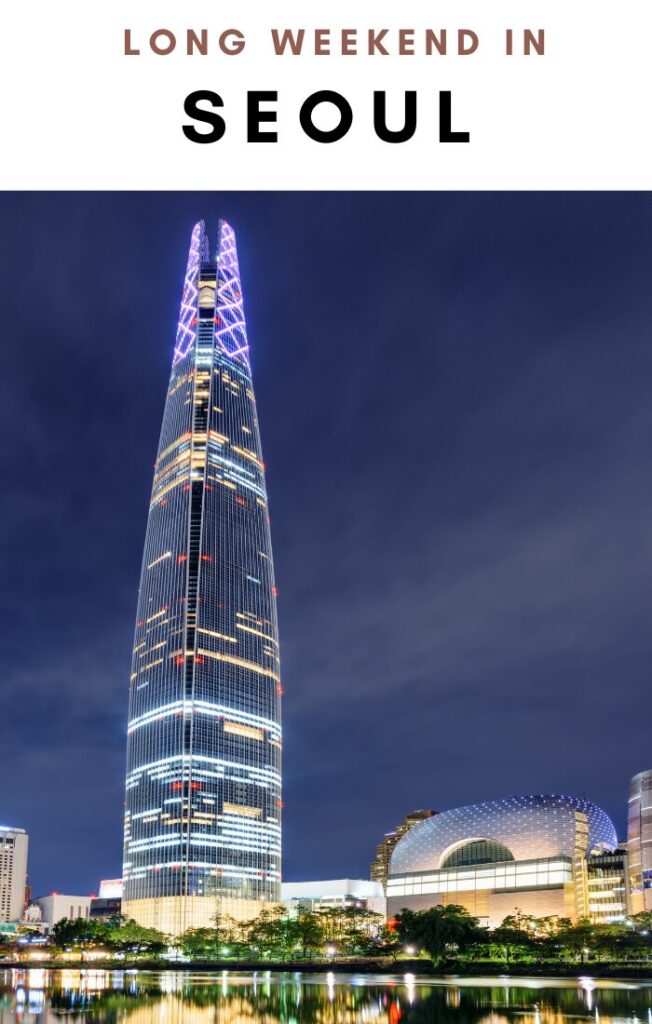Nestled on the southeastern tip of the Korean Peninsula, Busan is South Korea’s second-largest city and one of its most compelling destinations. Renowned for its picturesque beaches, bustling ports, and vibrant cultural scene, Busan offers a unique blend of urban excitement and natural beauty that beckons travelers from around the world.
It is a city where modern skyscrapers stand juxtaposed against ancient temples, and where the rhythmic waves of the sea create a serene backdrop for bustling markets and dynamic festivals.
The long coastline of Busan hosts Jagalchi, the second-largest fresh and dried seafood market in the country. Its two famous beaches: Gwangalli and Haeundae, offer both relaxing sunbathing and water activities and entertainment. On one side of the city, the Oryukdo Skywalk protrudes into the sea with its glass catwalk, allowing visitors to admire the rugged coastline.

On the eastern side, the Haedong Yonggungsa temple – a rare Buddhist temple facing the sea – promises to inspire visitors and locals alike with its serene and beautiful atmosphere.
Whether you’re a foodie craving fresh seafood, an adventurer eager to explore rugged coastlines, or a culture enthusiast ready to delve into rich traditions and contemporary arts, Busan promises an unforgettable journey.
Day 1
South Korea Info & Stats
- Language: Korean
- Population: 51,966,948 (2023 est.)
- Timezone: UTC +9
- Political System: Unitary presidential republic
- Ethnic Groups: Korean 95.1%, other 4.9%
- Religions: No religion 56.1%, 27.6% Christian, 15.5% Buddhist, 0.8% other
- Currency: Korean Republic won (₩ – KRW)
- Credit Cards: Credit cards are widely accepted
- Electricity: 220 volt / 60 hertz (Schuko, Europlug)
- Tipping Customs: Not customary
- Haggling Culture: Not common
Weather
The weather in Busan is pleasant all year round, and the city is characterized by a humid subtropical climate defined by its maritime influence.
The four seasons are marked distinctly, with spring offering beautiful sights of cherry trees blooming. Summer has pleasant temperatures ranging from 20°C to 30°C allowing one to enjoy the city’s beaches. Fall brings drier, cooler weather, still remaining pleasant at around 15°C-25°C, and the mountainous regions surrounding the city and its parks, such as Geumjeongsan, and Yongdusan Park, offer great hiking opportunities to view the beautiful autumn foliage. Winter is much milder compared to other northern cities in South Korea, with temperatures staying usually above freezing, and because of the seaside position, snow is rare as opposed to cold snaps from winds and rain.
Money
The currency is the South Korean Won (KRW).
The exchange rate from US Dollars is: 1,328
Credit Cards are widely accepted. ATMs are commonly distributed around the city.
Prices: South Korea is an expensive country, with its capital Seoul being one of the most expensive cities to live in. Busan is less expensive than Seoul (around 25% cheaper) but should still be considered a pricey destination to visit. According to the Mercer Cost of Living City Ranking (updated 2024), Busan ranks 88th worldwide in terms of most expensive cities to live in (in 2023, it ranked 68th)
Tipping: Like other far-east countries such as Japan, tipping is not practiced, and doing so can actually be considered rude. Service is expected to always be exceptional and if paying in cash, change will always be exact and you are expected to not leave anything behind.
Entry Requirements
South Korea has distinct visa requirements based on country of origin and citizenship.
Click the map to see details on visa requirements for each country
Alternatively, input your passport citizenship and quickly see the requirements that apply to you:
Getting around
As in other major cities, especially in Asia, the most efficient mode of transport is the Subway. There are multiple lines making it ideal for reaching the major attractions. Single-journey tickets can be purchased or a rechargeable T-Money card can be purchased. Signage is English allowing easy navigation
There is also an extensive bus network, with many (small) and frequent buses. Also here T-Money cards can be used or the fares can be paid in cash upon exiting from the front of the bus.
Taxis are also widely available and can be booked online with the app KakaoTaxi. Uber is also available and is automatically converted to the local UT. Tada is also a popular ride-sharing app.
Another popular transport is bicycles, especially on the coastal side and seaside promenade. “Ddareungi” is the most popular bike-sharing service.
Finally, exploring the city on foot, as I often do, is a wonderful way to get up close and personal with the streets, neighborhoods, and markets. Note however, that Busan is a large city and even traversing its long coastline can be a daunting task.
Safety
South Korea is extremely safe. That being said, Busan is the second-largest city in the country and pickpocketing can still occur in major tourist places. Also, South Korea has one of the largest numbers of traffic accidents for a developed country so keep your wits about you when wandering around.
Natural risks: The main natural risk in Busan is caused by typhoons in summer due to its coastal location. Other potential, but rarer, hazards include mild earthquakes, tsunamis, and frequent flooding.
Emergencies numbers: 112 (police), 119 (medical services and fire department)
Tips & Impressions
Despite coming from a month-long camping exploration of New Zealand where I often encountered cold weather, when I arrived in Seoul, I was completely unprepared for the cold of its northern weather. That all changed when I got off the train in Busan and was met by a wonderful warm Spring sun. I immediately fell in love with the city and spent four days there constantly exploring the beautiful sights the city has to offer. Haedong Yonggungsa temple, despite being very crowded was a beautiful trip and the seaside atmosphere is calming and really
Deals for Busan
Where to stay
I stayed at the Denbasta Central Hotel Seomyeon ($$$) because of its central location and easy access to the subway.
The room was essential, modern, and comfortable, which was welcome after the days of constant walking and sightseeing.



